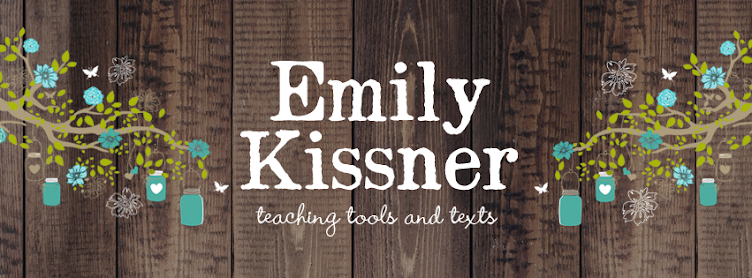Teaching students how to effectively write to compare and contrast is so important for teachers of all grade levels. Comparing is important for test-taking, but it's important for life, too. Readers of wildlife blogs want to know how
cottonmouths are different from copperheads, foodies want to know
the difference between cassia cinnamon and ceylon cinnamon, and teachers want to know
how different basal series stack up against each other.
Kids can get better at writing to compare and contrast very quickly, making it a great writing project for November and December. Here are some suggestions for getting started.
 1. Start by comparing real objects
1. Start by comparing real objects
Even older kids need concrete experiences! By starting with real objects, kids of all ability levels can learn how to systematically compare. Because last week was Halloween week, we used Hershey Hugs and Hershey Kisses, but you could compare anything that kids find interesting.
As kids compare, focus on using language such as
similarities and
differences to move kids away from terms like
sames and
differents.
2. When you move to text, discuss: What to compare?
Begin this conversation by talking about how students compared the real objects based on their physical characteristics. What could we compare in text?
Be aware that what kids say (and don't say) in this discussion will reveal the gaping holes in your reading instruction. And that's okay, because you want to know about those gaps, right?
Hopefully, students respond with these kinds of ideas: form (poem, narrative, article, etc), author's purpose, topic, central idea/theme, point of view, tone, word choice, and so forth. Students probably won't know the exact words for all of these, but will remember talking about them at some point in time.
The big goal here is to make the shift from the physical world to the abstract world of talking about texts. If you don't hear at least a few of these abstract concepts, you may want to hold off on comparing texts and deal with this issue.
3. Use a graphic organizer
I've used them all: Venn diagrams, double bubble maps, charts. The actual organizer is not as important as the thinking that kids put into it and the modeling that you show. Right now, we are using
Thinking Maps again at my school (yay!), so I am working with those.
You will notice that my students have used lots of color in making graphic organizer. My students are very visual thinkers this year and LOVE using different kinds of markers as they work.
4. Show clustered and alternated styles of writing, but emphasize alternating
There are two distinct methods of compare and contrast: clustered, in which details about each item are clustered together, and alternating, in which the details alternate back and forth. I like to show students each version, but focus more on the alternating style. This is more difficult to write, but easier for the reader to understand. (You can find detailed examples in my
Sea Turtles Expository Text Mini-Unit)
I wrote about two of my favorite restaurants for my example. I recommend that you write your own little paragraph example--kids love to find out details about their teachers! In my example, I underlined details about Chipotle yellow and details about Montezuma's blue. Details that refer to both are green. (I wish I'd come up with it, but it was a kid's idea...he liked it so much that he created a similar color scheme for making his own double bubble map.)
5. Work with topic and concluding sentences
Kids will look at the topic sentences that you model and alter them for their own writing. Variations of the topic sentence that I used in my Chipotle/Montezuma's paragraph has turned up again and again in student writing. Something about this sentence (even though I only showed it on one day of instruction) was compelling and memorable for students. This shows that they are still shaky on writing topic sentences for compare and contrast paragraphs.
I'm not surprised that kids are struggling with topic sentences for compare and contrast paragraphs. Many adults struggle with this, too. Are we just writing for the sake of comparing, or is there a point to this comparison? If the writer doesn't know, the reader won't, either!
In my Montezuma's/Chipotle paragraph, I created the idea of "choosing" between the two as a reason for the comparison. This can be effective and easy for kids to understand.
6. Give kids lists of transitions to use as they write
Without access to strong transitions, students will revert to a "also/but" pattern. Having a list of transitions available to students challenges them to try phrases like "however" and "on the other hand". Creating this list is a good activity to try with students.





